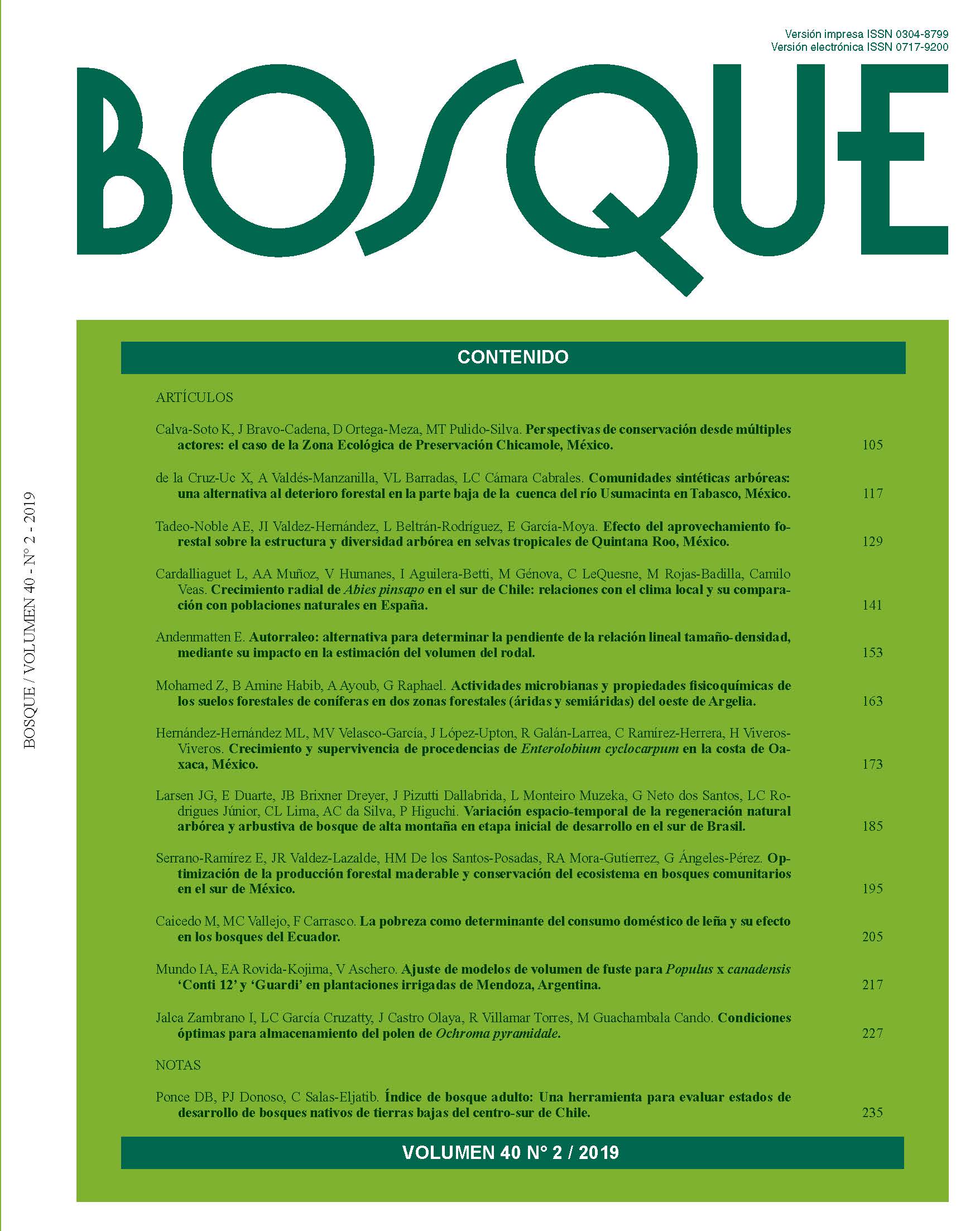Spatial-temporal variation of the natural regeneration of an early-successional upper-montane tree-shrub community in Southern Brazil
Main Article Content
Abstract
We aimed at analyzing the dynamics of spatial-temporal variations of the early-successional wood and sub-woody components in an upper-montane community, in the municipality of Urubici, Southern Brazil. Within a 20x100 m transect, all regenerative individuals, equal to or over 20 cm high and with diameter at breast height smaller than 5 cm, were identified, measured, tagged and spatially located (x, y coordinates). One and two years after the first survey, all sampled individuals were counted again, registering recruits and dead individuals. Demographic rates by size class and time interval (2014-2015 and 2015-2016), number of individuals of the most abundant species and spatial distribution of dead and recruits were determined. We observed the increment of number of individuals and a greater participation of early-successional species. Smaller size classes and second time interval had superior values of mortality and recruitment rates. For both time intervals, recruits presented a clustered spatial pattern. Dead individuals showed, predominantly, a random spatial pattern. Results indicated structural instability, demographic rates variation regarding size classes and time interval, and distinct spatial pattern for dead and recruited individuals. We conclude that regeneration of the study area is still at an early stage of succession, presenting itself as a complex process, expressed by different spatial patterns of mortality and recruitment.

